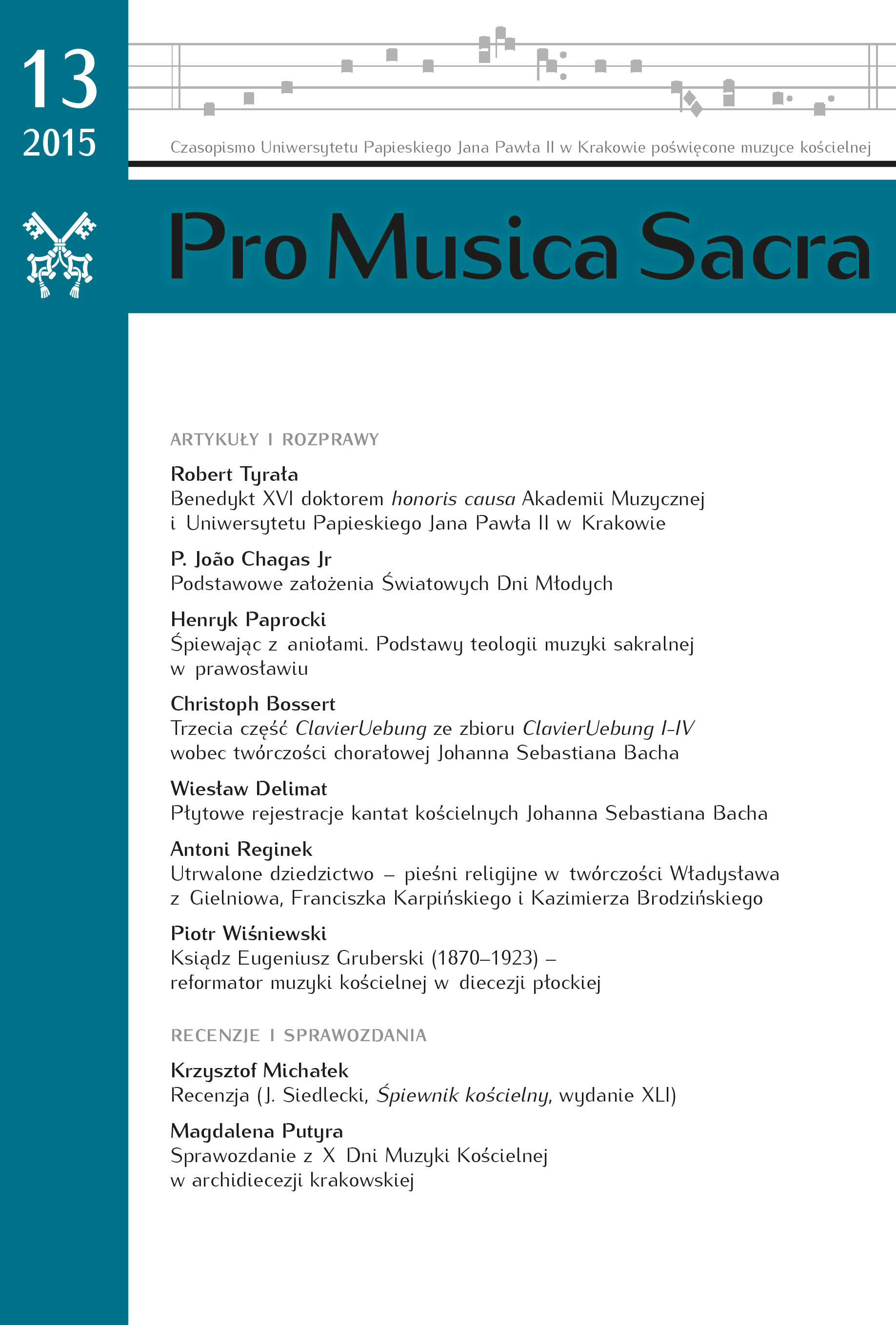Śpiewając z aniołami. Podstawy teologii muzyki sakralnej w prawosławiu
Singing with the Angels. The Foundations of the Theology of Sacred Music in orthodoxy
Author(s): Henryk PaprockiSubject(s): Christian Theology and Religion, History, Cultural history, Theology and Religion
Published by: Wydawnictwo Naukowe Uniwersytetu Papieskiego Jana Pawła II w Krakowie
Keywords: sacred music; liturgy; Orthodoxy; esthetics
Summary/Abstract: The author’s reflections on the theology of sacred music in Orthodoxy commenceswith the fact that the entire Liturgy is precisely outlined in the book known as theTypikon, which is at the same time a scenario and score of the service. The Typikon introducesorder in the elements of prayer and also places an emphasis on beauty. For this reason,concepts such as artistry, artist, art and creativity play such an important role in thethought of the Church Fathers. The essence of this music is fundamentally an unceasingpursuit of the heavenly archetype, in order to attain unity between the divine realm andthe human world. Liturgical music is therefore one of the ways of overcoming the fallenstate and recovering the unity lost. The theory of church singing originates in Byzantiumand influenced the formation of the Byzantine musical form, which delighted PrinceVladimir’s representatives in Constantinople. The beauty of the Greek Liturgy has becomeone of the criterions of authenticity of faith. The fascination with the beauty of theLiturgy is not an esthetic evaluation, but is a desire to grasp the essence of God throughbeauty. The Byzantine concept has been heavily influenced by the idea of the divine pattern,which was given to people by God by the angels or saints. This principle appliesto all types of art including music. According to tradition, the well-known Byzantinehymnographer, poet and musician St. Roman the Melodist received the gift of arrangingkontaktions and chants in a vision. The Mother of God appeared to him in a church andgave him a scroll with the instructions to consume it. After waking up, Roman the Melodistsang “Today the Virgin Gives Birth.” As a result, his creativity is the fruit of a giftreceived from God. Moreover, comparing church chants with the heavenly (from the 8thcentury, choir) is expressed in liturgical hymns, which tell of human voices blending withthe songs of the Cherubim, thus creating a choir proclaiming the glory of God as “anicon in sound.” Liturgical chant contrasts itself with folklore songs. Church singers representedthe angels, and for this reason, the name “choir” makes reference to the concept ofthe nine choirs of angels. Liturgical chant should sound solemnly, heavenly, and shouldbe dematerialized (complemented by church architecture, giving the effect of poured outsounds rising to the dome of the church and returning as celestial and heavenly chant).
Journal: Pro Musica Sacra
- Issue Year: 13/2015
- Issue No: 13
- Page Range: 85-98
- Page Count: 14
- Language: Polish

